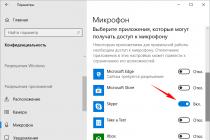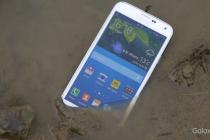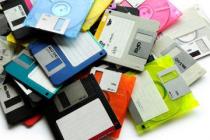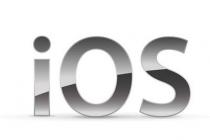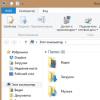The name "smartphone" itself translates as " smart phone". And indeed, this phone is very smart. But users usually use only a small part of its capabilities, being content with the actual telephone component, SMS, social networks, toys and surfing in every sense. But besides this, a smartphone can do a lot of other things. This is especially true of the newest premium models, which introduce all sorts of super-innovative things like scrolling through text with your eyes. Of course, not everyone can use such extravagant abilities, but there are a lot of useful features available to most smartphone owners on any popular platform.
A smartphone can be not only a dialer and decoration, but also a useful tool
sports assistant
Perhaps one of the most common non-primary uses of a smartphone is as a personal overseer during physical exertion, or just a fitness trainer. While the latter is simply a matter of installing a dedicated exercise information app, the former takes advantage of the smartphone's hardware capabilities to its fullest.
A typical application in this case looks like this: an application like Runtastic (for all major platforms) is installed, which tracks all possible parameters of a person while running or cycling. It starts before the start of the workout, and the person receives full statistics on the distance covered. This information includes the number of calories burned, exact travel time, distance, ascents/descents, average speed, etc.
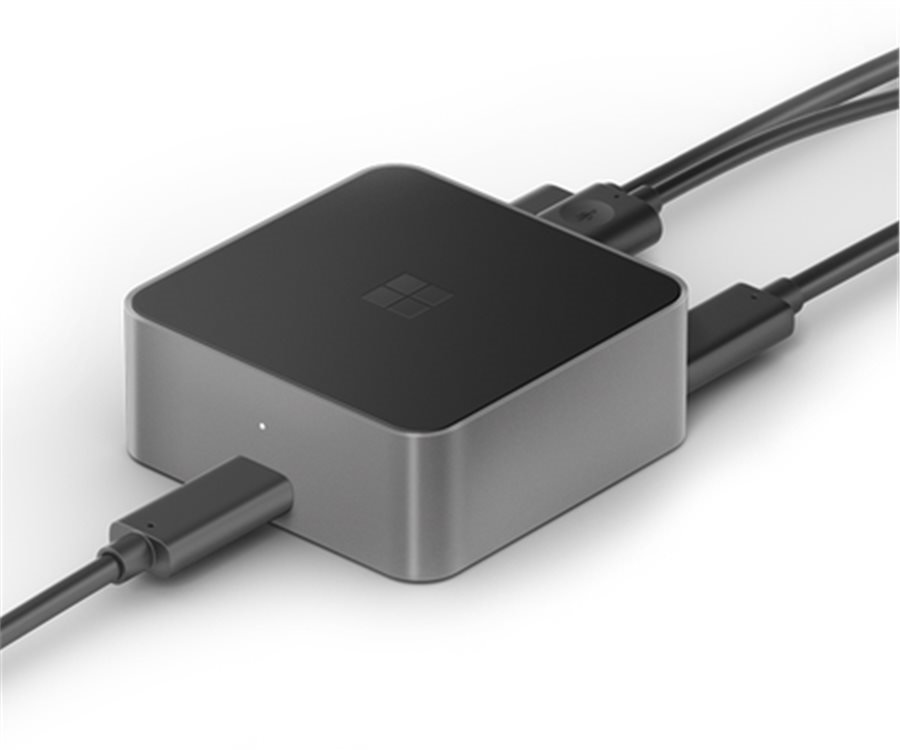
Note that most of the information is based on data received from GPS satellites, and this is convenient at least because it basically does not require an Internet connection. However, if you want to see such information in real time on a map, you will need the Internet. In general, all aspects of training are affected in sports applications, and there are even exotic ones - for example, the Just 6 Weeks application allows, with due perseverance (and steroids), to get an athletic figure in just six weeks.
By the way, in Lately for the role of a fitness assistant claim " smart watch”, which slowly but surely interest the public. This fall, the most tempting novelty is expected to be released - the Kreos Meteor watch - which promises to blow up the market with its fantastic features at a dumping price.
GPS and people
Most people use GPS satellites only as an attachment to various maps and navigation systems- to accurately determine their location for them. But GPS has much more possibilities: for example, as described in the previous part, for recording active physical activity. However, this can be called a kind of "applications to maps."
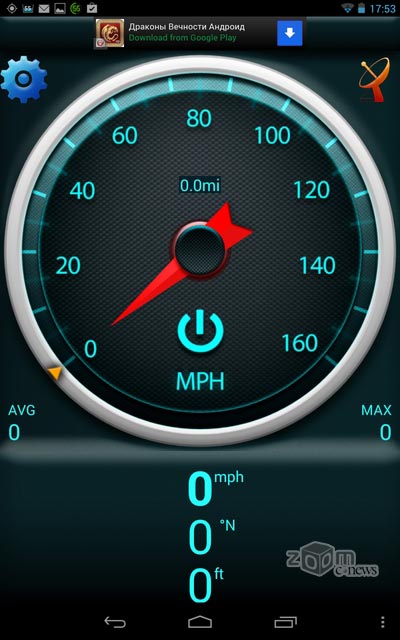
Really interesting opportunities satellite work is hidden in GPS applications. For example, the GPS Speedometer, which shows you the current speed of both you (if you are walking) and the vehicle, including altitude reports. It is still theoretically possible to determine the speed of an aircraft while sitting in the cabin, but in practice this is not available to every device.
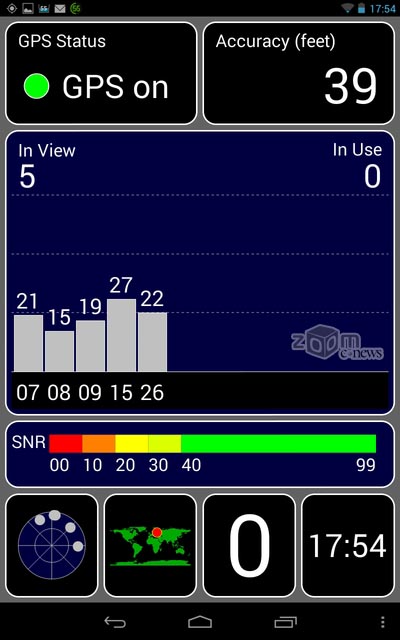
And you can also try GPS app Test to see how many active (and how active) satellites your smartphone can currently catch. This affects the accuracy and speed of determining the coordinates that are used for all the above operations.
By the way, scientists at the University of California, Berkeley (USA) recently found another use for GPS sensors in smartphones: they were used to collect information about the underwater world, packing them in waterproof capsules and slightly modifying some of them for autonomous movement.
We compose music
One of the trends of recent years is the "electronization" of musical instruments: from turntables to pianos and guitars. We will not argue about whether this is good or bad, we’d rather do our bit and tell you about the use of a smartphone as a musical instrument.
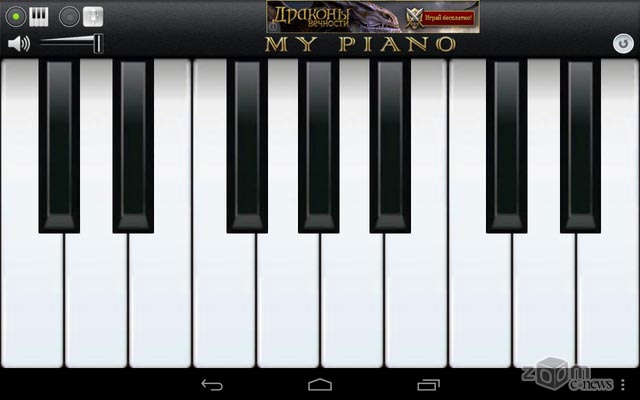
And not just as an ordinary DJ console with sixteen virtual pads, but also as many different "classic" instruments. For example, the My Piano virtual piano or the VirtualGuitar virtual guitars.
Before the launch of the first phones on Windows 10, Microsoft's marketing department definitely had a lot of work to do - we couldn't wait to try out the much-touted Continuum feature. Windows systems 10, which, according to the promises of the developers, will become a "bridge" between a smartphone and a PC.
However, after we finally received latest model Lumia 950 XL and tested it in testing laboratory CHIP, we've been disappointed. Continuum turned out to be not a "bridge" at all, but only a shaky "pier".
This feature is made possible by the Display Dock, which is a compact black device that can be used to connect a monitor, keyboard, and mouse.
Continuum starts automatically the moment you connect your smartphone to the docking station. appears on the monitor screen. user interface Windows 10, already familiar to owners of PCs and laptops running this system.
 The resulting combination of smartphone and docking station allows you to edit PowerPoint and Excel files in Office Mobile on the big screen using the familiar mouse and keyboard. Interacting with applications becomes more convenient and easier than swiping your finger on a small mobile phone display.
The resulting combination of smartphone and docking station allows you to edit PowerPoint and Excel files in Office Mobile on the big screen using the familiar mouse and keyboard. Interacting with applications becomes more convenient and easier than swiping your finger on a small mobile phone display.
If you do not want to connect an additional mouse, then the smartphone can be used as a touchpad. In a way, this is quite convenient, because the control becomes very precise, however, the device cannot be placed on a smooth table surface - it slides off easily.
Work on a large computer screen is supported only by the so-called universal applications - currently these are office applications. Microsoft programs(Word, Excel, Outlook), Edge browser, photo apps, and a few other utilities. But Microsoft promises that the list of universal applications will grow rapidly.
One smartphone - two systems
Despite the fact that the smartphone is connected to the display, you can still answer calls, you can also receive and send SMS messages. In general, the idea is really good, but the technology still needs to be improved a little.
Thanks to the Continuum feature, the phone is actually two devices that can be interacted with in parallel. For example, when Word is running on the monitor, Excel can be running on the smartphone at the same time.
At this stage, everything is going well so far, but sometimes the control logic is lame. For example, if you launch an application that is not supported by Continuum on the monitor display, it will automatically open on the phone display as well.
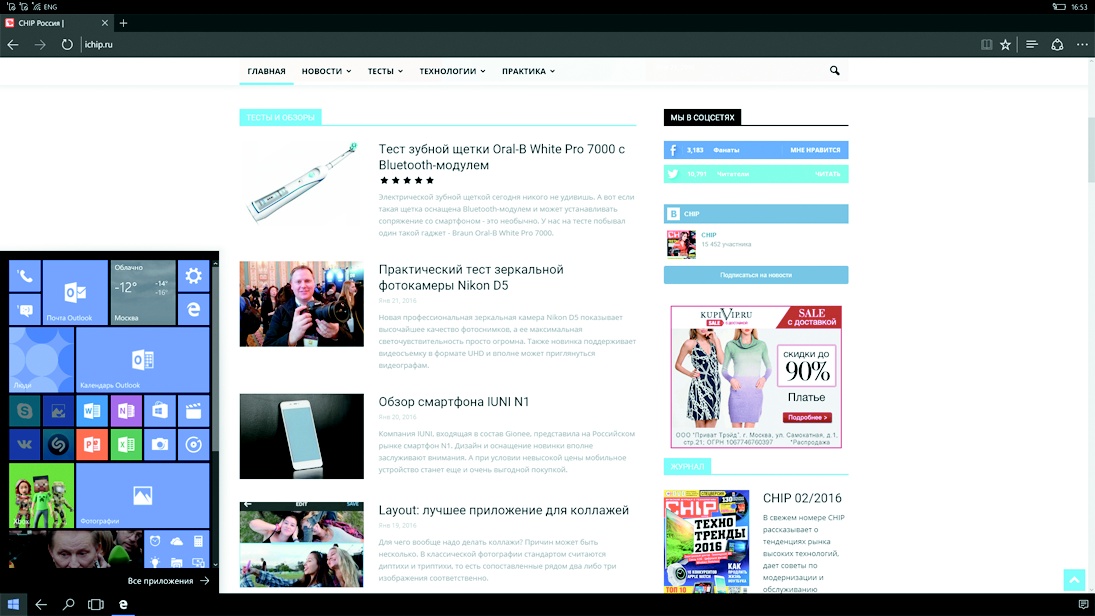
Sometimes, during operation, programs disappear both from the smartphone screen and from the PC monitor as if by a wave magic wand, but this seems to be a simple software bug. Random errors are not excluded, such as incorrect display of the application interface on a large display and failure to work. virtual keyboard on your smartphone after deactivating Continuum.
So, after the first tests of the technology in practice, there are not many reasons for joy. Summing up, it should be noted that Snapdragon processor The 810 in the Lumia 950 XL handles two parallel systems well and doesn't get overloaded.
However, even when using only office programs the smartphone unpleasantly heats up, despite the liquid cooling declared by the manufacturer. What will happen when Continuum starts supporting more complex applications like games?
Docking station - as a gift
Whether smartphone management will become more comfortable, time will tell. Nevertheless, Microsoft is not going to test the patience of users interested in Continuum with a long wait: Display Dock for Lumia 950 XL is already on sale at a price of 7000 rubles. At first, however, all buyers of the Lumia 950 XL registered on the Microsoft website were given a docking station as a gift - and this is understandable, because recently the prices in the store only spoil the mood.
With this in mind, you need to be aware that the Continuum function does not imply anything new that could not be done with android phone equipped with an MHL adapter for connecting to a monitor. The purchase of a Bluetooth keyboard and mouse can be just put in those very 7,000 rubles.
The test results of the Lumia 950 XL can be viewed in a separate publication:
A photo: manufacturing company
The idea of creating a computer based on a smartphone is not new for a long time. Just imagine how convenient it would be if you could use one gadget in various places, simply connecting it as needed to image output devices and data input peripherals. At work, your smartphone becomes a laptop or a convenient assistant for presentations, at home - a multimedia, music or game center, in a car a carputer, and so on. You do not need to worry about data transfer or personalization of program interfaces, and all your media baggage or mobile office is with you at any time.
Of course, some of these things have long been easily implemented. For example, data may be stored in cloud service, the sound is broadcast through the mobile DAC, and the video is shown from the projector to which the smartphone is connected via Wi-Fi. But the matter has not yet reached a full-fledged computer. The main difficulty lies in the lack of appropriate software, capable of supporting desktop versions of programs, which, by the way, is already . Created by her earlier on Windows base Mobile partially solves this problem, but, again, no launch full-fledged programs speech is not. On the other hand, HP approached the issue with its Workspace, offering to remotely use its server computer with a pre-installed set of applications, which can also be a very promising idea.
Lapdock
What options for creating a PC based on a smartphone exist today? Without touching the remote launch of programs on any remote computer, for which a mobile phone is not really needed, it is conditionally possible to distinguish three different directions among them. The first is a wireless connection to a modern monitor or TV that has access to the network, as well as the use of peripherals that work via Bluetooth.
Thus, you can easily output an image to big screen working with comfortable mouse and keyboard. The second option is to use special docking stations, by installing a smartphone on which you get physical USB ports, HDMI and Display Port that do not require wireless connection. And finally, the third possibility is Lapdock, which got its name in 2011 thanks to Motorola. This term is not yet fully established, but it is regularly applied to such devices.
So what is Lapdock? In fact, everything is simple. Lapdock is nothing more than an abbreviation for the words Laptop and Dock, which in practice is a docking station made in the form factor of a laptop. Such a laptop does not have the hardware inherent in classic devices, and in addition to the display, battery and keyboard, it provides owners with a set of interfaces and the usual ease of use. Naturally, it is proposed to use a smartphone as a “brain” for it.
And although the first Lapdock "appeared back in 2008, they are only starting to gain popularity now. And this is not surprising, because modern eight- or ten-core smartphones with 6 GB random access memory in terms of performance, most laptops from 5 to 6 years ago are easily plugged into the belt. This can be confirmed by Andromium Inc., which in 2014 failed to raise only $100,000 in Kickstarter for its docking station that can turn a smartphone into a computer, and already this year, backers donated quite significant donations to its Lapdock - Superbook $2,952,508. Face difference.
History
First, let's dive into history a bit. Quite a lot of various concepts were created in the 2000s, but one of the pioneers of this direction can be safely considered Palm Inc., which introduced its Foleo subnotebook in early 2007. Of course, it was not a full-fledged Lapdock, but it was assumed that it would work in conjunction with Palm Treo smartphones. The product did not find significant support among buyers and the project was soon curtailed.
A year later, inspired by Palm, the same idea was decided to bring to life by the developer Willy Yonkers, who demonstrated the concept of iPholio. As the name unambiguously hints, his device was to be paired with the iPhone, which was proposed to be used both as a computing center and as a touchpad, placing it in a corresponding recess on the case. If Kickstarter had existed by that time, then, quite possibly, iPholio could have become the first Lapdock, but history had other plans for this.
In 2008, Celio released three models of the REDFLY line, which were already full-fledged Lapdocks and were even mass-produced. The most famous product of this format was the Motorola ATRIX Lapdock, designed to work in tandem with mobile phones ATRIX, followed by the Lapdock 500 for RAZR smartphones and the generic Lapdock 100 for Android compatible devices. Since 2012, many different startups like Casetop, ClamBook or KT Spider Laptop have fallen down, but none of them has become really popular.
Our days
Things got off the ground only this year, not least thanks to advent of Windows Continuum. Quite expensive Acer Liquid Extend and HP Lap Dock solutions were announced, designed to work in tandem with Acer Liquid Jade Primo and HP Elite X3 smartphones, as well as more versatile budget startups NexDock for Windows-compatible and Superbook for Android-compatible devices. I would like to tell you a little more about them.
HP Lap Dock
The device manufactured by Hewlett-Packard was developed for the Elite X3 smartphone, although, according to unofficial data, it works fine with the Lumia 950 XL, and possibly with other models based on Windows Mobile. Initially, the company stuck to the name Mobile Extender, but later it was decided to call the gadget the classic Lap Dock. The unusual docking station is equipped with a 12.5-inch Full HD display, a backlit keyboard and a touchpad. Connecting to a smartphone is via a wired connection via USB port Type-C or wireless - Miracast.
The device is made in a waterproof plastic case and has on board battery at 46.5 Wh, interfaces USB Type-C and micro-HDMI, a 3.5mm mini-jack for connecting headphones, a microphone, and a Bang & Olufsen stereo system. The HP Lap Dock measures 289 x 201 x 13.8 mm and weighs 1 kg. The cost in pre-order on the Russian Microsoftstore is a very impressive 42,990 rubles.
Acer Liquid Extend
Little is known about Acer's Lapdock, which has not yet gone on sale. In addition to the form factor and the presence of a keyboard with a touchpad, the company only reports an 11.6-inch display diagonal and a resolution of 1280 x 720 pixels. There is also its own battery, as well as a set of ports, represented by several USB Type-C and one micro-HDMI. It is allowed to use the smartphone screen as a trackpad. The exact cost and date of sale have not yet been announced, but given that the start of implementation was promised in the third quarter of 2016, this should happen in the near future.
NexDock
Crowdfunding startup NexDock, which has successfully collected on Indiegogo the amount of $ 300,000 necessary for the launch, offers everyone its version of Lapdock "and without being tied to specific model smartphone. In addition to full-fledged work with Continuum-compatible devices, the device can act as a large screen for gadgets on Android based or iOS, or become a full-fledged laptop if you connect a PC stick or Raspberry Pi to it.
The 14.1-inch screen has a resolution of 1366 x 768 pixels and an aspect ratio of 16:9. There are two USB ports, one miniHDMI, a 3.5mm headphone jack, a stereo system and a card reader. Connection with a smartphone is carried out using an HDMI port, for connection to which it is supposed to use a USB-C to HDMI adapter.
There was not enough money yet to install a regular USB Type-C, but its presence is promised by the developers in the future. The battery capacity is 10,000 mAh, however, due to the HDMI connection, recharging a mobile gadget during operation, unfortunately, is impossible. The NexDock measures 351 x 233 x 20mm and weighs 1.49kg. The minimum price declared for backers is $79. The Lapdock will go on sale at a price of $150.
superbook
The latest in our review is the brainchild of Andromium Inc., which developed not only Lapdock, but also a special Andromium OS operating system that allows you to create a PC based on an Android smartphone, even without the need for additional docking stations. Launched on Kickstarter, the Superbook project turned out to be mega-popular, bringing the creators almost $3 million. Let's hope that they manage the funds received wisely and soon we will be able to see a really viable product.
The device received an 11.6-inch display with a resolution of 1366 x 768 pixels, a keyboard and a touchpad with multi-touch support. The battery capacity of 7500 mAh is enough for 8 hours of work. In the future, it is planned to release models with Full HD matrices, but for an additional fee. A USB port is used to connect a smartphone, and the mobile device itself must support USB-OTG.
It is noteworthy that Superbook became the first modern Lapdock "th, focused on use in tandem with gadgets based on Android (not lower than 5.0). To start working on a smartphone, you need to install Andromium OS, after which you can fully work on a "laptop" with any applications from Google Play, and, unlike Windows Continuum, there is the ability to open several windows at once. The price declared by the manufacturer for the production model at $99 is also curious. The first backers should receive the long-awaited gadget in January next year, and the start of a wide sale is expected in March.
Conclusion
As you can see, Lapdock is experiencing a new birth, and, quite possibly, will soon be able to take its place in the market. True, for this, developers will have to work hard to ensure the compatibility of mobile operating systems with desktop versions of programs.
Not so long ago, the duet of designers Fyodor Golan presented to the public a fashionable outfit - Nokia models Lumia 1520 and 1020, which is remarkable not only for the material used, but also for the fact that the images on the phone screens change, imitating the movement of real fabric. The show took place as part of the Fashion Week event in London. In general, the idea is very interesting, but does not have much practical application in life.
Apparently, there are so many smartphones in the world that we have to look for new ways to use them. Some ways of using "smart phones" can hardly be called unusual, for example, they are widely used as navigators, as music and video players ... How else can you use a smartphone in an unusual way and with maximum benefit? Read our review!
1. Smartphone - Universal remote remote control
Some time ago, many smartphone manufacturers decided to return the infrared port to the equipment of devices, for example, some models, LG, HTC and Sony are equipped with it.
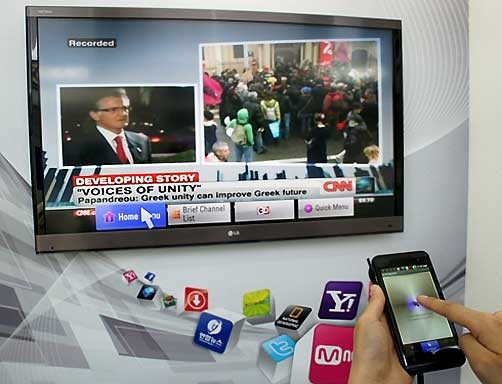
Such a port allows you to transfer data at speeds up to 115 Kbps with a small range - about 3-4 meters. A number of software vendors are now offering apps that take advantage of this smartphone capability to turn the device into a universal remote control.
2. Smartphone - the savior of the rainforest
Surely you could not even think about this, but, nevertheless, smartphones can help save the resources of our planet! Non-profit organization Rainforest Connection completed an extraordinary project.

The company has created a network of Android smartphones whose microphones respond to the sounds of a chainsaw and send a message with the coordinates of potential poachers to the authorities. Smartphones are powered by solar panels.
3. Smartphone - the brain center of the space satellite
Power modern smartphones allows you to use them even for truly extraterrestrial tasks. On February 25, 2013, a satellite was launched into Earth orbit STRAND-1, which became the first satellite to be controlled using a smartphone. STRaND-1 is controlled by two computers: the first is a classic CubeSat computer and the second is a Google Nexus One smartphone with operating system Android.
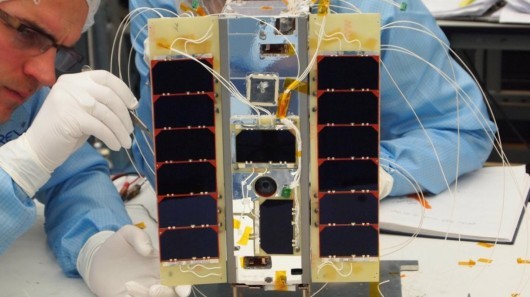
Smartphone, which is an integral part CubeSat has cameras, several radio interfaces, accelerometers and a high-performance processor - everything except solar panels and engines. During the first phase of the mission, the satellite will use a number of experimental Linux-based data collection applications. - computer with SSC system for satellite control. At the second stage, the developers will connect a smartphone to control the satellite and test the capabilities of the smartphone and its components when working in outer space.
4. Smartphone - medical laboratory
Modern smartphones have enough power and low cost to solve such problems. University of Illinois researchers have developed an accessory for iPhone, which in its capabilities resembles a full-fledged laboratory.
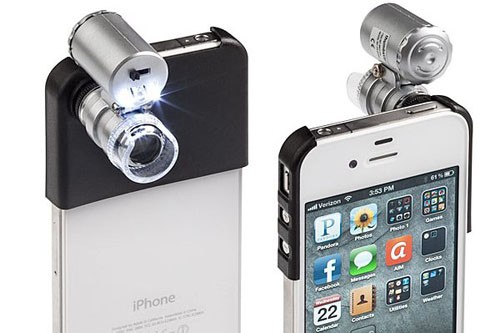
With it, the gadget's camera can detect the presence of toxins, protein fragments, bacteria, viruses and other organisms in drinking water. At the same time, the accessory costs only $200, while the laboratory equipment costs at least $50,000.
5. Smartphone - a toy for a cat
Not everyone modern man there is an opportunity to devote enough time to your furry friend, but domestic cats have little entertainment and a caring owner just needs to take care of the pet’s entertainment. A smartphone will also help in this matter! The developers have released a number of applications specifically for cats! For example, application program Human-to-Cat Translator translates human speech into a variety of meows, and it is believed that the cat can understand this.
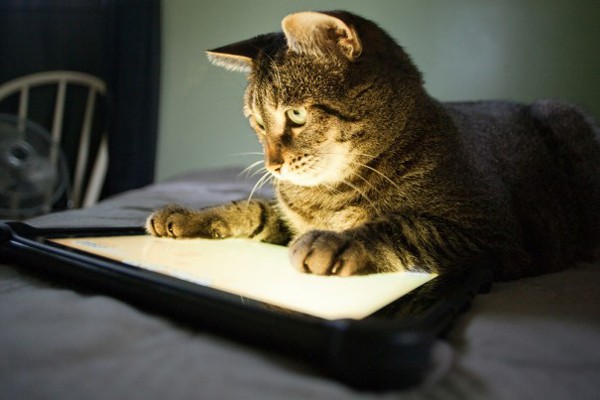
Another program Pet Snap, can attract the attention of an animal with various sounds, and when an animal approaches, take photos of it. And, of course, there are many toys for cats - an animal can “fish” in a pond, chase a drawn mouse or insect.
Canonical, which gained wide popularity after creating a Linux distribution called Ubuntu, presented another interesting project called Ubuntu for Android. The main goal of this solution is using ubuntu on smartphones with operating Android system. If only one core is active, the system data can be shared on the same machine. If the mobile device is working in standard mode, then no changes should be expected. However, everything will change when you connect the docking station with a monitor and special keyboard: This device will be a desktop PC that will keep various functions mobile device. This solution, according to the developers, will become famous in a corporate environment in which people must fit workplace in your own pocket. In such cases, even laptops are out of the question.
This solution is not some kind of Ubuntu shell that can only function on top of Android. It is known that developers do not try to popularize Ubuntu with their own development. Use android emulator also not expected. Ubuntu for Android is feature rich working environment, which functions simultaneously with Android, while using one common core that provides access to certain information on the device. Due to its small size, the smartphone is very convenient to use in various places. The magic begins when you connect your mobile device to a special docking station: the familiar Ubuntu environment with support for a mouse, keyboard and monitor will be available. Ubuntu for Android looks a cut above when compared to similar solutions. You can remember about Asus system Transformer, in which the developers connected a smartphone and a laptop. In the course of such actions, the developers of Canonical received an unspecified device, the system of which is able to activate the Ubuntu environment only when connected to special peripherals that can realize a large number of benefits.
Who will be useful new system? This product aimed at various corporate users who use both a smartphone and a laptop. With Ubuntu for Android, many of these professionals will cut their own gear to a minimum. For ordinary users, convergence can be considered a win.
The Android/Ubuntu bundle allows you to create separate data groups. Users no longer have to, for example, use multiple address books or synchronize them in a special way. This also applies to other content, which includes documents, music, and videos.
If you connect your own Ubuntu for Android-enabled mobile device to a certain HDMI-enabled TV, the desktop will not be displayed: users will get the Ubuntu TV interface. Here you can view various types of content from your phone, or using the network. In the hands of users will be a set-top box called Ubuntu TV.
Discuss the proposed information, as well as get advice from specialists on installing and configuring software on mobile devices you can go to

